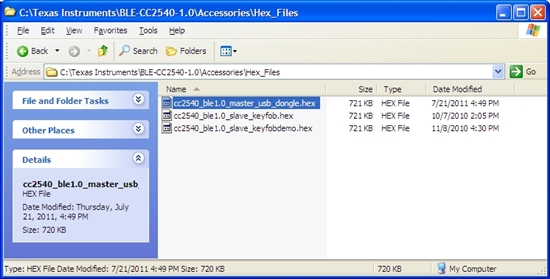Hello,
We have a new sample project called KeyFobDemo which can be found on the following Texas Instruments Wiki
http://processors.wiki.ti.com/index.php/Category:KeyFobDemo
The example comes with source and binaries and will demonstrate the following functionality.
- Report battery level
- Report 3 axis accelerometer readings
- Report proximity changes
- Report key press changes
- Buzzer/ LED
These are implemented using GATT server profiles and the top level application. Note, these profiles are not yet aligned with Bluetooth SIG profile specifications and are provided only as an example. This demo uses the same libraries which were provided in the version 1.0 installation.
LPRF Wiki: http://processors.wiki.ti.com/index.php/Category:LPRF
Thanks,
LPRF Team




